
Below is a video overview of kiosk hardware, watch it carefully to learn more!
Watching the video above, you can find that our kiosk hardware is all original, and the quality, user experience, and after-sales service are all very guaranteed. As a professional manufacturer engaged in the kiosk industry for more than 10 years, the quality of our kiosk hardware is trustworthy. Contact us today and let us start a pleasant journey of cooperation from now on.
| Component | Description | Function and Application |
|---|---|---|
| Display Screen | A touchscreen or non-touchscreen used for user interaction. Available in various sizes, resolutions, and brightness levels. | Provides the visual interface, displays information, and guides user actions. |
| Processor/Computer | The main processing unit containing the CPU, memory, and storage. Responsible for running kiosk software and data processing. | Controls the entire kiosk operation, processes user inputs and backend data. |
| Printer | A device for printing receipts, tickets, or other documents. It can be thermal or inkjet, depending on the kiosk's use case. | Issues printed materials like receipts, tickets, and vouchers to users. |
| Card Reader | A device for reading magnetic stripe, chip, or contactless payment and ID cards. | Processes payments or verifies user identity by reading various types of cards. |
| Scanner | Used for scanning barcodes, QR codes, or documents. Can be integrated with the kiosk for user convenience. | Captures data from barcodes, QR codes, or documents for various applications. |
| Keypad/Buttons | Physical input devices for manual data entry, often used as an alternative to or in conjunction with a touchscreen. | Allows users to input data manually, typically used in secure or simple interfaces. |
| Enclosure/Cabinet | The external shell that houses and protects the internal components. Can be customized in terms of design, material, and color. | Protects internal hardware, provides structural integrity, and enhances aesthetics. |
| Power Supply | Provides electrical power to the kiosk, including voltage regulation and power distribution. | Ensures the kiosk operates consistently by supplying stable power. |
| Network Connectivity | Includes components like Wi-Fi, Ethernet, or 4G/5G modules for connecting the kiosk to external systems or the internet. | Enables communication with remote servers, cloud services, or other kiosks. |
Retail Self-Service Kiosks: Used in stores for customer self-checkout, product information, and inventory lookup, enhancing shopping convenience and reducing wait times.
Payment Kiosks: Deployed in various settings like malls, transit stations, and restaurants for bill payments, ticketing, and parking fee collection, offering secure and quick transaction processing.
Wayfinding Kiosks: Found in large venues such as airports, shopping centers, and hospitals, these kiosks help users navigate spaces by providing interactive maps and directions.
Check-In Kiosks: Commonly used in hotels, airports, and hospitals, allowing users to check in for flights, appointments, or hotel stays independently, streamlining the process.
Information Kiosks: Used in public spaces like museums, government buildings, and libraries to provide visitors with information, services, or promotional content through an interactive interface.
Digital Signage Kiosks: Utilized in advertising and marketing within malls, outdoor locations, and public transport hubs, displaying dynamic content like advertisements, announcements, and real-time information.
Vending Kiosks: Found in locations such as airports and malls, these kiosks allow users to purchase items like snacks, drinks, or electronics, offering a quick and automated shopping experience.
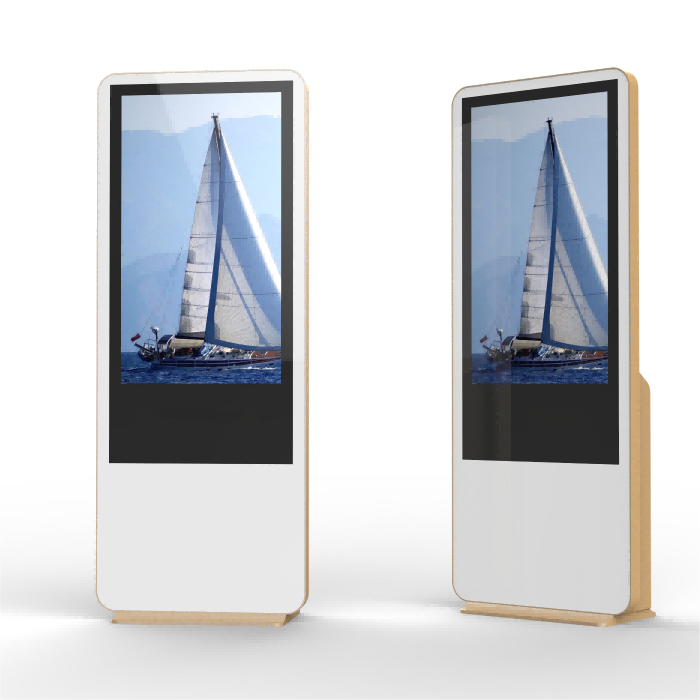
Kiosk hardware customization options allow businesses to tailor kiosks to their specific needs. Customizations can include display size and type, such as choosing between different screen sizes, resolutions, or touch technologies. The enclosure design can be adjusted for material, color, branding, and IP rating for durability. Additionally, component selection like printers, card readers, and scanners can be customized to suit specific applications. Businesses can also opt for customized power supplies, network connectivity options, and security features to match their operational environment.

Installation: Proper installation of kiosk hardware is crucial for optimal performance. It involves selecting an appropriate location that ensures visibility and accessibility for users. The hardware must be securely mounted, with attention to power supply and network connections. Calibration of touchscreens and testing of components like printers and card readers are essential steps to ensure functionality.
Maintenance: Regular maintenance is necessary to keep the kiosk running smoothly. This includes cleaning screens and enclosures, updating software, checking connections, and replacing worn components. Monitoring for issues like printer jams or connectivity problems and addressing them promptly helps maintain the kiosk’s reliability and extends its lifespan.
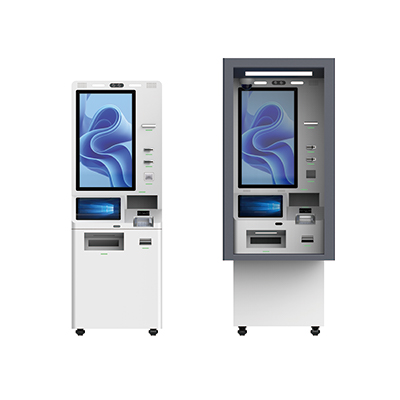
Compatibility: Ensuring kiosk hardware is compatible with existing systems is essential for seamless operation. This includes compatibility with various operating systems like Windows, Android, or Linux, as well as with peripheral devices such as printers, card readers, and scanners. Compatibility with software platforms, including POS systems, payment gateways, and content management systems, is also critical.
Integration: Integration involves connecting kiosk hardware to external systems, such as databases, cloud services, and network infrastructure. Proper integration allows for real-time data exchange, remote monitoring, and centralized management. APIs and middleware can be used to facilitate communication between the kiosk and other business systems, ensuring a cohesive and efficient operation that meets specific business needs.
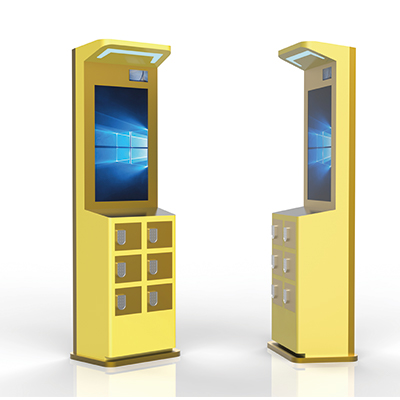
Physical Security: Kiosk hardware must be designed to withstand tampering, theft, and vandalism. This includes using durable materials for the enclosure, implementing locks and tamper-evident seals, and anchoring the kiosk securely to its location. For outdoor kiosks, weather-resistant designs and IP-rated enclosures protect against environmental factors.
Data Security: Protecting sensitive user data is paramount. Kiosk hardware should include encrypted card readers, secure payment processing systems, and compliance with PCI DSS standards. Regular software updates, firewalls, and antivirus protection are essential to safeguard against cyber threats. Additionally, secure network connections, such as VPNs, can be used to protect data transmission between the kiosk and remote servers.
Access Control: Limiting access to the kiosk’s internal components and software through passwords, biometrics, or RFID ensures that only authorized personnel can perform maintenance or make changes, reducing the risk of unauthorized access and potential security breaches.
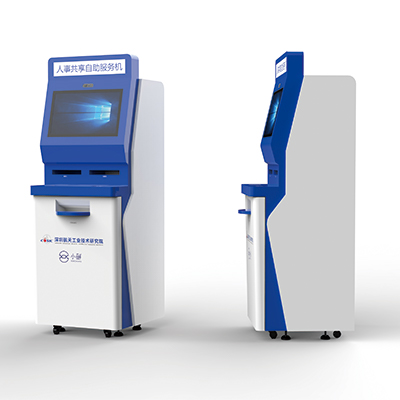
Kiosk hardware manufacturers: There are various kiosk hardware manufacturers, each offering different levels of customization, quality, and support. Leading manufacturers include global companies known for their innovation and reliability, as well as smaller, specialized providers that focus on niche markets. When selecting a manufacturer, it's important to consider factors like production capacity, experience, and the ability to provide ongoing technical support and maintenance services.
Kiosk hardware Pricing: The cost of kiosk hardware can vary widely based on the complexity, features, and customization options. Basic models may start at a few thousand dollars, while high-end, fully customized kiosks can exceed tens of thousands of dollars. Key factors influencing price include the choice of components, such as touchscreens, processors, and peripherals, as well as additional features like weatherproofing, branding, and advanced security measures. Bulk purchasing, long-term service agreements, and extended warranties can also impact overall pricing.
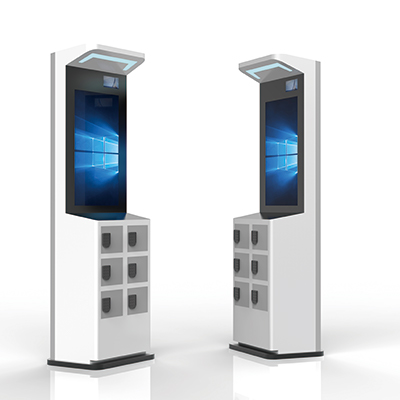
Kiosk hardware trends: Kiosk hardware is evolving with the rise of interactive and intelligent systems. Key trends include the integration of AI and machine learning, which enhances user interactions and provides personalized experiences. Contactless technology is gaining traction, driven by health and hygiene concerns, enabling users to interact with kiosks without physical touch. Sustainability is also a growing focus, with manufacturers developing energy-efficient and recyclable materials.
Innovations: Innovations in kiosk hardware feature advanced display technologies like ultra-high-definition screens and flexible displays for improved user engagement. Modular designs allow for easy upgrades and maintenance, while IoT connectivity enables real-time monitoring and remote diagnostics. Enhanced security features, such as biometric authentication and advanced encryption, are being integrated to protect user data and transactions. These innovations aim to enhance functionality, user experience, and operational efficiency in various applications.

| Component | Specification | Description |
|---|---|---|
| Display Screen | Size: 10" to 55" or more | The physical size of the screen, typically measured diagonally. |
| Resolution: 1080p, 4K, or custom | The pixel density of the display, affecting clarity and sharpness. | |
| Brightness: 300-1000 nits | Determines visibility in different lighting conditions, especially outdoors. | |
| Touch Technology: Capacitive, Resistive, IR, or Non-Touch | The type of touch interface used, influencing responsiveness and durability. | |
| Aspect Ratio: 16:9, 4:3, or custom | The proportional relationship between the display's width and height. | |
| Processor/Computer | CPU: Intel i3, i5, i7, ARM Cortex | The central processing unit, which handles the kiosk’s computing tasks. |
| Memory (RAM): 4GB, 8GB, 16GB | The amount of random-access memory available for running applications. | |
| Storage: 64GB SSD, 128GB SSD, 256GB SSD | The internal storage capacity for software, data, and media files. | |
| Operating System: Windows, Android, Linux | The software platform on which the kiosk runs, impacting software compatibility and user interface. | |
| Printer | Type: Thermal, Inkjet | The technology used for printing, influencing print quality and maintenance needs. |
| Paper Width: 58mm, 80mm | The width of the paper used, typically for receipts or tickets. | |
| Print Speed: 100mm/s, 200mm/s | How fast the printer can produce printed materials. | |
| Card Reader | Type: Magnetic Stripe, Chip (EMV), NFC | The types of cards that can be read, such as credit cards, ID cards, or contactless payment methods. |
| Security Features: PCI Compliance, Encryption | Ensures secure transactions by adhering to industry standards and using encryption. | |
| Scanner | Type: 1D, 2D Barcode, QR Code, Document | The types of codes or documents the scanner can process. |
| Scan Speed: 60 scans/second | The rate at which the scanner can capture and process information. | |
| Enclosure/Cabinet | Material: Steel, Aluminum, Plastic | The type of material used, affecting durability, weight, and aesthetics. |
| Finish: Powder Coating, Anodized, Painted | Surface treatments for protection and appearance. | |
| IP Rating: IP54, IP65 | Indicates protection against dust and water, important for outdoor or harsh environments. | |
| Power Supply | Voltage Input: 100-240V AC | The range of input voltage the kiosk can handle, ensuring compatibility with different power sources. |
| Power Consumption: 50W, 100W, 200W | The amount of power the kiosk uses during operation, affecting energy efficiency. | |
| Network Connectivity | Type: Ethernet, Wi-Fi, 4G/5G | The methods available for the kiosk to connect to the internet or local networks. |
| Data Speed: 100Mbps, 1Gbps | The speed at which data is transmitted, impacting performance during high-demand applications. |
What did our happy clients say?
Thrilled with our new kiosk hardware! The installation was seamless, and the advanced features have significantly improved our customer interactions. The touchscreen is responsive, and the overall build quality is excellent. Highly recommend!
Extremely satisfied with the kiosk hardware purchase. It integrates perfectly with our existing systems and has exceeded our performance expectations. The durability and sleek design have enhanced our customer service experience.
Our new kiosk hardware has been a game-changer! It’s easy to use, reliable, and looks great in our store. The customization options allowed us to get exactly what we needed. Excellent quality and value for money!
Very pleased with the kiosk hardware! The setup was straightforward, and the functionality is top-notch. The user interface is intuitive, and the hardware performs flawlessly. A great investment for improving our operations.